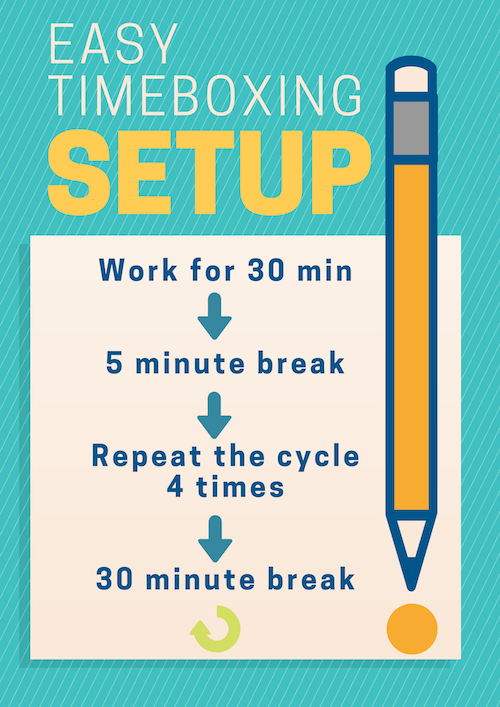Timeboxing Technique
We strive to make the most out of the day. However, time tends to run, even when we do not pay attention to it. If you do not plan time out, then it will run wild. In project management, a technique often used is timeboxing. This simple technique can become a powerful tool to become more productive.
What is Timeboxing?
The idea is to allocate a certain amount of time to activity in advance and then complete the activity within that time frame. One example is to plan a meeting agenda and determine upfront, how long you want to work on each topic. The primary purpose is to set the boundary (boxing in that time) and focus on that task within the given allotted time. I have seen articles comment on setting up a timer for the allotted tasks. Check out my article on Pomodoro Technique involving a timer.

Two Types
As with most things, duality plays a role with timeboxing. There are the soft or hard stops involved with timeboxing. Each can be tested on how you want to utilize timeboxing. However, if this technique will be used in a group setting, inform the participants prior.
Hard stop (time) is when you literally cut off everything at the end of the given time. Stop and drop everything regardless what is occuring.
The Soft stop (time) is allowing the given conversation or task to complete before ending the given time. This method is used for beginners with timeboxing. It still allows control, yet provides those involved to not feel cut off or shortened.
One way to limit confusion and interruption is having a timer in view for all to see. This will allow the participants to see how much time remains, forcing them to wrap it up or get to the point.
Timeboxing Five steps
The timeboxing technique generally involves 5 steps. These steps help you schedule out a more realistic time frame to complete your tasks and overall goal.
- Find suitable tasks
- Define your goals
- Set the time
- Work and assess your results
- Claim your reward
A reward is a great incentive to accurately complete your tasks in the given timeframe. This can be something as simple as reviewing social media platforms. When you assess the results, you can see what works and doesn’t work.
Everhour provides free templates for timeboxing.
Summary
While we tend to secure physical goods with insurance and locks, safeguarding those items, we do not view time as a precious commodity. Something I am personally working on as well. For those smaller tasks, the Pomodoro Technique is very useful. The timeboxing technique can be used for larger tasks or projects. Some would go as far as identifying every task in advance and given a dedicated time to each. At the end of the week, review what was successful while adjusting accordingly those not for next week’s tasks.
The point is not to be too strict, rather mindful.
Mindfulness isn’t difficult. We just need to remember to do it.
Sharon Saltzberg

Matt Cole has high regard for knowledge share. He has a desire to share critical thinking and information. With a Masters in Information Technology and a wide array of certifications, while not working full-time, he wishes to knowledge share through providing insight, information organization, and critical thinking skills.
#KnowledgeShare | Matt Cole | #infobyMattCole






